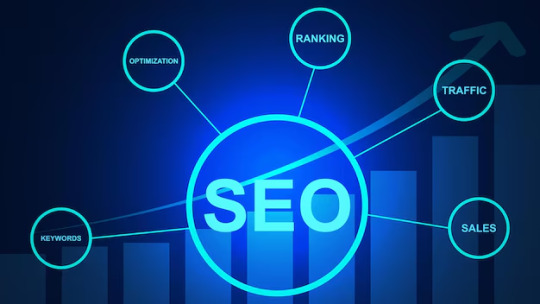Hi! I am Henry Thomas a Marketing Manager at Singhi Marketing Solutions and I am working in this Company for the last 5 years. I am not the owner of the content which has been published here. This content is only for knowledge purposes. This content belongs to the respective owners and I do not hold any right for this content.
Don't wanna be here? Send us removal request.
Text
UX vs. UI: What's the Difference and Why It Matters
In the world of digital design, UX (User Experience) and UI (User Interface) are often used interchangeably, but they represent two distinct aspects of the design process. Understanding the difference between UX and UI is crucial—especially if you're working with a Web Designing Company to build or revamp your website.
While both UX and UI are essential to creating a successful digital product, they play very different roles. Here’s a breakdown of what each one means, how they differ, and why it matters for your business.
What is UX (User Experience)?
User Experience focuses on the overall interaction a user has with a website, app, or digital product. It’s all about how a person feels while navigating your platform. Is the experience smooth and intuitive, or confusing and frustrating?
A UX designer's job is to ensure that the user's journey is logical and efficient. This involves tasks such as:
Conducting user research and testing
Creating user personas and journey maps
Structuring content for clarity
Designing wireframes and prototypes
Ensuring accessibility and usability
Great UX is invisible. You don’t notice it because everything just works. But when UX is poor, users notice—and they don’t stick around.
What is UI (User Interface)?
User Interface, on the other hand, refers to the visual and interactive elements of a digital product. This includes buttons, colors, typography, spacing, and responsive design. UI is about making the interface not only beautiful but also functional and consistent.
UI designers focus on:
Visual design and branding
Creating interactive elements (buttons, sliders, icons)
Choosing color schemes and typography
Designing for different screen sizes and devices
Maintaining design consistency across pages
If UX is the foundation and structure of a house, UI is the paint, furniture, and decor. Both are necessary for a functional and inviting space.
UX vs. UI: The Key Differences
AspectUX (User Experience)UI (User Interface)FocusUser journey and usabilityVisual design and interactivityPurposeMake the product easy and satisfying to useMake the product visually appealing and intuitiveProcessResearch, wireframes, testingVisual design, layout, aestheticsOutcomeSmooth user flowEngaging, attractive interface
Why the Difference Matters
When businesses look to hire a Web Designing Company, they often expect a single expert to handle both UX and UI. While some professionals are skilled in both areas, treating them as the same can lead to missed opportunities.
Here’s why it’s important to understand the distinction:
Better Collaboration: Knowing the roles helps you communicate more effectively with your design team.
Improved User Satisfaction: A well-thought-out UX increases user retention, while a compelling UI boosts engagement.
Higher ROI: Investing in both UX and UI design leads to better performance, higher conversions, and increased customer loyalty.
Avoiding Design Pitfalls: Focusing only on visuals (UI) without considering user flow (UX) can result in a beautiful but ineffective product.
Choosing the Right Web Designing Company
If you're building a new site or redesigning an existing one, partner with a Web Designing Company that understands the synergy between UX and UI. Ask about their process. Do they conduct user research? Do they create detailed wireframes before jumping into visual design? Do they test their designs with real users?
A great Web Designing Company will have a collaborative team of UX and UI designers working together to create a product that not only looks good but performs well too.
Conclusion
UX and UI are two sides of the same coin. While UX ensures your website functions smoothly and meets user needs, UI makes it visually attractive and engaging. For any digital product to succeed, especially in today’s competitive market, both are non-negotiable. So, when working with a Web Designing Company, make sure they bring expertise in both areas to deliver a website that your users will love—and your business will benefit from.
1 note
·
View note
Text
The Evolution of SEO: From Keyword Stuffing to User Experience
Search Engine Optimization (SEO) has undergone a dramatic transformation since its early days. What started as a game of cramming keywords into content has evolved into a sophisticated strategy focused on delivering value, relevance, and seamless user experiences. Today, the best SEO practices go far beyond keywords—they prioritize the user. Let’s explore how SEO has evolved and why working with the Best Search Engine Optimization Services can make all the difference in staying ahead.
The Early Days: Keyword Stuffing and Manipulation
In the late 1990s and early 2000s, search engines like Yahoo and AltaVista used relatively basic algorithms. At the time, SEO was all about visibility through keyword repetition. The more times you mentioned a keyword on a page, the higher your chances of ranking.
Webmasters quickly caught on, leading to the infamous practice of "keyword stuffing"—cramming target terms into every sentence, meta tag, and image alt attribute. Pages were often unreadable, created more for algorithms than actual humans.
Search engines responded with updates to penalize these tactics, leading to the first big SEO evolution.
The Rise of Google and Smarter Algorithms
Google revolutionized search with the introduction of PageRank, which evaluated the quantity and quality of links pointing to a page. Suddenly, backlinks became the gold standard. However, this also led to another wave of manipulation, with link farms and paid backlink schemes gaining popularity.
To counteract this, Google rolled out algorithm updates like Panda (2011), Penguin (2012), and Hummingbird (2013), targeting low-quality content and unnatural links. These updates signaled a shift toward quality over quantity.
SEO was no longer just about keywords or backlinks—it became about relevance, trust, and user intent.
The Age of Content and Intent
With Hummingbird and later RankBrain, Google began focusing on semantic search. This meant understanding what users meant, not just what they typed. Content that answered specific questions or matched the searcher’s intent started ranking higher.
This era introduced the importance of long-form content, structured data, and voice search optimization. Suddenly, SEO was not just technical—it was creative. Brands had to think like publishers, creating helpful, engaging, and authoritative content.
To meet these new demands, businesses started turning to the Best Search Engine Optimization Services that offered full-spectrum strategies—covering everything from technical audits to content marketing.
Mobile-First and Core Web Vitals: UX Takes Center Stage
Fast forward to the 2020s, and SEO is now heavily influenced by user experience (UX). Google's mobile-first indexing means your mobile site is what counts most. Page speed, mobile usability, and safe browsing are all ranking factors.
In 2021, Google introduced Core Web Vitals—metrics that measure page loading performance, interactivity, and visual stability. These are clear signals that the user experience directly impacts your rankings.
Today, if your site is slow, hard to navigate, or poorly designed, no amount of keyword optimization will help. That’s why investing in the Best Search Engine Optimization Services is essential. These services combine UX design, technical SEO, and content optimization to deliver results that align with modern search algorithms.
What’s Next for SEO?
As AI and machine learning continue to evolve, so will SEO. Search engines are getting better at understanding context, sentiment, and even visual content. Voice and visual search are growing. Personalization is increasing. And with the rise of generative AI, the way people search—and the results they expect—are shifting.
Staying ahead means staying agile. Whether it’s optimizing for voice queries or integrating AI into your content strategy, the future of SEO is about adapting quickly and always prioritizing the user.
Final Thoughts
SEO has come a long way—from robotic keyword stuffing to creating human-centric, user-friendly experiences. Today, succeeding in search means understanding both the technical and human sides of the internet.
Partnering with the Best Search Engine Optimization Services ensures your strategy is future-proof, ethical, and effective. In a world where algorithms constantly evolve, having expert guidance can be the difference between visibility and obscurity.
0 notes
Text
Speed & Performance: How Your Design Affects Load Time

Speed & performance are crucial in web design—your layout, images, and code structure directly impact load time. A slow website can drive users away. Optimizing assets and using clean code ensures faster loading. Professionals offering web designing services focus on performance-driven design, enhancing user experience and boosting search rankings through fast, responsive, and efficient websites.
0 notes
Text
Creating a Personal Brand as a Web Designer

In today’s digital-first world, your personal brand can be just as powerful as your portfolio. As a web designer, standing out among a sea of creatives is no easy task—but developing a strong personal brand can make all the difference. Whether you're a freelancer or part of a web designing company, a personal brand helps potential clients and employers understand who you are, what you do, and why you're the right choice.
What is a Personal Brand?
At its core, a personal brand is your professional identity. It’s the combination of your personality, skills, values, and design style—all wrapped up into how you present yourself online and offline. A strong personal brand builds trust, conveys expertise, and helps clients relate to you as a person, not just a service provider.
Why Personal Branding Matters for Web Designers
Unlike other professions, web design is highly visual and subjective. Clients often hire based on aesthetics and compatibility as much as skill. A personal brand gives you control over the narrative. It’s your chance to showcase your strengths, niche, and passion in a way that attracts your ideal clients.
For instance, if you're part of a Web Designing company, having a standout personal brand within the team can still help you build credibility. It shows leadership, initiative, and individuality—traits that are highly valuable in collaborative environments.
Steps to Build Your Personal Brand
1. Define Your Brand Identity
Start with self-reflection. What kind of work excites you? What design styles do you love? What are your core values as a designer? Are you all about minimalism, or do you love bold, experimental layouts?
Once you’ve nailed down your unique traits, craft a brand statement that clearly expresses who you are and what you offer. Something like: “I’m a UX-focused web designer helping small businesses build beautiful, conversion-driven websites.”
2. Develop a Signature Visual Style
Your personal brand should be visually consistent across your website, social media, portfolio, and resume. This includes:
Logo or name design
Color palette
Typography
Image style
Layout choices
These elements help create familiarity and professionalism, which are key in building trust with potential clients or a Web Designing company looking to hire.
3. Build an Online Presence
Your online presence is where your brand lives and breathes. At a minimum, you need:
A personal portfolio website – This should highlight your best work, testimonials, services, and contact info. Make sure it’s optimized for mobile and reflects your brand tone.
LinkedIn profile – Keep it updated and aligned with your brand.
Social media – Instagram, Twitter, or even TikTok can be great for sharing behind-the-scenes content, design tips, or projects in progress.
Many clients will check your social media before contacting you, so keep it professional, but don’t be afraid to let your personality shine.
4. Share Your Knowledge
Establish yourself as an expert by creating content. Write blog posts, make YouTube videos, or start a newsletter on design trends, tools, or tutorials. If you're working at a Web Designing company, this also adds value to the business, as it positions both you and the company as thought leaders in the space.
5. Network and Collaborate
Networking isn’t just about finding clients. It’s also about learning from peers, discovering new tools, and building relationships. Attend design conferences, join design communities, or collaborate with other creatives. Personal branding is as much about who you know as what you do.
Final Thoughts
Creating a personal brand as a web designer takes time, intention, and authenticity. Whether you're freelancing or part of a Web Designing company, your brand helps define your career trajectory. The more intentional you are about how you present yourself, the more likely you are to attract clients and opportunities that truly align with your vision.
Remember, your personal brand is always evolving—just like your design skills. Embrace it, refine it, and let it grow with you.
0 notes
Text
The Role of Microinteractions in Modern Web Design

In the ever-evolving world of web design, one of the key elements that is gaining increasing attention is microinteractions. These small, often subtle interactions play a significant role in enhancing user experience (UX) and are pivotal in making websites more engaging and intuitive. In modern web design, the role of microinteractions cannot be overstated, as they help create a more dynamic, responsive, and user-friendly environment.
What Are Microinteractions?
Microinteractions are tiny, single-purpose moments within a website or application where users interact with the interface. They can range from something as simple as a button change when clicked, to a more complex interaction, such as a notification or an animation that signals a successful action. Despite their small scale, these microinteractions have a big impact on user experience and can make the difference between a forgettable site and one that users remember and return to.
Enhancing Usability and Feedback
One of the most important roles that microinteractions play in modern web design is providing immediate feedback to users. When someone clicks a button or hovers over a link, they need to know something is happening. Without clear feedback, users might feel uncertain or frustrated. Microinteractions address this need by offering visual or auditory cues that confirm the user's action.
For example, a simple hover effect on a button (like changing its color or displaying a shadow) can let the user know that it’s clickable. Similarly, when a user submits a form, a small animation showing a successful submission (such as a checkmark or a short animation) reassures the user that the action has been completed successfully. These subtle signals improve the overall usability of the website, making the interaction feel more responsive and intuitive.
Building Emotional Connections with Users
Web design is not just about functionality; it's also about creating an emotional connection with the user. Microinteractions help accomplish this by adding personality and delight to the experience. A carefully designed microinteraction can evoke a sense of joy or satisfaction in users, leading to increased engagement.
For instance, consider a website that uses a playful animation when the user adds an item to their shopping cart. This adds an element of fun, making the process feel more enjoyable. Microinteractions like these can humanize the digital experience and encourage users to stay on the site longer, increasing the chances of conversion.
Providing Visual Hierarchy and Guidance
Microinteractions are also essential in guiding users through a website and establishing a clear visual hierarchy. By incorporating subtle animations or transitions, web designers can highlight important elements and direct users' attention where it's needed most. For instance, when a user scrolls down a page, a well-placed transition or fade effect can draw attention to new sections or call-to-action buttons.
Moreover, microinteractions can help streamline the navigation process. They can alert users to the availability of certain features or help them easily identify where they are within a multi-step process, like an online checkout or survey form.
Improving User Engagement
In modern web design, keeping users engaged is crucial. Microinteractions can significantly contribute to this by making the experience more interactive. When a user clicks, scrolls, or hovers over elements, these small animations or responses create a sense of interaction, making the user feel more in control.
For example, interactive progress bars or animated loading indicators can help users feel like they are making progress, even during wait times. Instead of simply waiting for a page to load, users are engaged with a smooth animation that keeps their attention and reassures them that the website is working as intended.
Best Practices for Incorporating Microinteractions in Web Design
When integrating microinteractions into a website, designers should consider a few key best practices:
Keep it subtle: Microinteractions should be noticeable but not overwhelming. They should enhance the user experience without detracting from the overall design or functionality.
Be purposeful: Each microinteraction should have a clear purpose. Whether it's providing feedback, guiding users, or adding a touch of personality, each interaction should contribute meaningfully to the overall experience.
Ensure accessibility: It's essential to ensure that microinteractions are accessible to all users, including those with disabilities. Make sure animations are not too fast, that there's an option to disable them if necessary, and that screen readers can still interpret all content effectively.
Optimize for performance: Overloading a site with too many animations or effects can lead to performance issues. Microinteractions should be optimized to run smoothly on all devices, ensuring they don’t negatively impact load times or performance.
Conclusion
Microinteractions play a vital role in modern web design by improving usability, enhancing user engagement, providing feedback, and creating emotional connections. These small but powerful elements help guide users, make digital experiences more interactive, and ensure that the website feels dynamic and responsive. By paying attention to microinteractions, web designers can create websites that not only look great but also offer exceptional user experiences that keep visitors coming back. In the competitive world of web design, these subtle touches may be the difference between a website that stands out and one that fades into the background.
0 notes
Text
The Intersection of Content Marketing and SEO: A Deep Dive

In today’s digital-first world, the lines between content marketing and SEO are increasingly blurred. Gone are the days when stuffing a blog post with keywords was enough to climb Google rankings. Now, quality content and a strategic SEO approach go hand-in-hand to drive sustainable online visibility and engagement. Understanding how content marketing and SEO intersect is essential for any business looking to grow its presence online—and that’s where a professional SEO agency can make all the difference.
What is Content Marketing?
Content marketing is the strategic creation and distribution of valuable, relevant, and consistent content to attract and retain a clearly defined audience. It’s not just about selling—it's about storytelling, educating, and building trust. Blog posts, videos, white papers, social media updates, newsletters—these are all content marketing tools designed to engage your audience over time.
What is SEO?
Search Engine Optimization (SEO) focuses on increasing the quantity and quality of traffic to your website through organic search engine results. It involves optimizing your site architecture, technical performance, content, and backlinks to meet the ever-evolving algorithms of search engines like Google.
How They Intersect
Content marketing and SEO are two sides of the same coin. Here’s how they work together:
1. Content Fuels SEO
Search engines like Google thrive on content. The more high-quality, relevant content your website has, the better your chances of ranking for various keywords. However, it’s not just about volume—it’s about strategy. SEO agencies specialize in keyword research, user intent, and competitor analysis to guide content creation that aligns with what your audience is searching for.
2. SEO Optimizes Content Visibility
Creating great content is only half the battle; people need to find it. SEO ensures that your content is discoverable. From meta tags and alt text to internal linking and mobile optimization, SEO techniques help your content rank higher and reach the right audience. An SEO agency ensures that all technical elements are in place so your content doesn’t just sit on your site—it performs.
3. User Experience Matters
Both SEO and content marketing focus on the user. SEO aims to deliver fast-loading, mobile-friendly pages, while content marketing delivers valuable information. Together, they create a seamless user experience that encourages longer site visits, lower bounce rates, and higher conversion rates—signals that Google uses to determine rankings.
4. Content Builds Backlinks
Quality content naturally attracts backlinks—one of the most critical ranking factors for SEO. When your blog posts or infographics are shared by others or cited by reputable sites, it sends positive signals to search engines. A good SEO agency will not only help you create content worth linking to but will also build a strategic outreach plan to earn those backlinks.
Why You Need an SEO Agency
While it’s possible to handle content and SEO in-house, partnering with an SEO agency brings expertise, tools, and scalability. Here's how:
Strategic Planning: Agencies develop a tailored SEO content strategy based on your goals and industry.
Data-Driven Insights: With access to advanced analytics, they can identify what’s working, what’s not, and pivot quickly.
Content Creation & Optimization: Many agencies offer in-house writers and designers who understand both SEO and storytelling.
Time & Cost Efficiency: Instead of guessing or trial-and-error, you get proven strategies that save time and drive results faster.
Final Thoughts
Content marketing and SEO are no longer separate disciplines. Today, they work best when combined into a cohesive strategy that prioritizes user value and search engine performance. By collaborating with a trusted SEO agency, businesses can amplify their online visibility, engage their audience more effectively, and ultimately, drive meaningful growth.
Whether you're just starting out or looking to scale, integrating SEO with your content marketing strategy is no longer optional—it's essential.
0 notes
Text
The Impact of Social Media on SEO Rankings

In the ever-evolving world of digital marketing, the relationship between social media and SEO rankings is a topic that continues to spark interest and debate. While Google has stated that social signals (likes, shares, followers) are not direct ranking factors, the indirect influence of social media on search engine optimization (SEO) is undeniable. Businesses and brands that leverage both effectively often see improved online visibility and organic traffic. If you're working with an SEO agency or considering hiring one, understanding how social media can impact SEO is essential.
Social Media and SEO: What’s the Connection?
At first glance, social media and SEO may seem like two separate entities. SEO focuses on optimizing your website to rank higher in search engine results, while social media centers on building relationships and engagement on platforms like Facebook, Instagram, LinkedIn, and Twitter. However, they intersect in key ways that can significantly benefit your digital presence.
Here’s how social media indirectly affects your SEO rankings:
1. Content Distribution and Visibility
Social media is one of the most powerful platforms for sharing content. When your blog posts, videos, or infographics are shared widely, they reach a broader audience. This increased visibility can lead to more website visits, which search engines interpret as a signal of relevance and authority. A good SEO agency will often integrate content marketing strategies with social media promotion to maximize reach and impact.
2. Increased Brand Awareness and Search Demand
Social media helps build brand recognition. When users become familiar with your brand on platforms like Instagram or LinkedIn, they are more likely to search for it directly on Google. These branded searches signal to search engines that your website is trusted and popular, potentially boosting your rankings over time.
3. Driving Quality Traffic
High-quality, engaging content on social media can drive targeted traffic to your website. If your social media followers find your content valuable, they’re more likely to click through to your site, explore your services, and convert. A reputable SEO agency will use analytics to measure and optimize the traffic flow from social media channels to ensure it contributes positively to SEO performance.
4. Link Building Opportunities
Although social media links are usually "nofollow" (meaning they don’t pass direct SEO value), they can still lead to link-building opportunities. If influential bloggers or websites discover your content via social media and decide to reference or link to it in their own posts, those backlinks can positively impact your SEO rankings. This ripple effect is something top-tier SEO agencies strategically aim to achieve.
5. Improved Content Longevity
The lifespan of your content increases with social sharing. A single blog post can resurface weeks or even months later if it continues to be shared or discussed on social media. This prolonged exposure keeps driving traffic and engagement, reinforcing your site’s authority in the eyes of search engines.
6. Local SEO and Customer Engagement
For businesses targeting local audiences, social media is a critical tool. Platforms like Facebook allow for location tagging and localized content sharing, which can improve your visibility in local search results. An experienced SEO agency will often include localized social media strategies as part of a broader local SEO campaign.
Final Thoughts
While social media may not directly influence SEO rankings through algorithmic factors, its role in driving traffic, building brand awareness, and fostering engagement is too significant to ignore. A well-coordinated strategy that combines the strengths of both social media and SEO can yield powerful results.
If you're looking to enhance your online visibility and achieve higher search rankings, partnering with an SEO agency that understands the synergy between social media and SEO is key. They can help you craft a cohesive strategy that maximizes the benefits of both, ensuring your business stays competitive in an increasingly digital world.
0 notes
Text
How To Price Your Web Design Projects?

Pricing your web designing projects requires balancing value, time, and market rates. Start by estimating project scope, complexity, and hours needed. Factor in tools, revisions, and client support. Research competitors and define your unique value. Whether charging hourly, per project, or via packages, ensure transparency. A clear, fair pricing strategy builds trust and sustains your web designing business.
0 notes
Text
Dark Mode Design: Pros and Best Practices

Dark mode design reduces eye strain, saves battery life, and enhances visual appeal in low-light environments. It offers a sleek, modern look that users love. Experts providing web designing services recommend high contrast, readable fonts, and careful color selection to ensure accessibility. Always test your design across devices to maintain usability and deliver a seamless user experience.
0 notes
Text
The Importance Of Local SEO For Small Businesses

Local SEO helps small businesses appear in nearby searches, attract more foot traffic, and compete with larger brands. It boosts visibility on Google Maps and local directories, making it easier for customers to find you. Experts offering the best SEO services ensure your business ranks higher in local results, driving growth and building trust in your community.
0 notes
Text
How To Optimize Your Website For Voice Search?

To optimize your website for voice search, focus on natural language keywords, create FAQ pages, and ensure your site loads quickly on mobile. Use structured data to enhance search visibility. Local SEO is crucial for voice queries. Experts offering SEO services recommend prioritizing conversational content and optimizing for featured snippets to capture voice search traffic effectively.
0 notes
Text
How to Use User Experience (UX) to Improve Your SEO

In today’s digital landscape, Search Engine Optimization (SEO) is no longer just about stuffing your content with keywords and getting backlinks. Search engines, especially Google, are evolving and becoming more sophisticated, prioritizing not only content relevance but also user experience (UX). It’s no longer enough for your website to just rank high on the search results; it must also provide users with a seamless and engaging experience. In this blog post, we’ll explore how improving user experience (UX) can directly enhance your SEO and why integrating search engine optimization services into this strategy is crucial for success.
The Relationship Between UX and SEO
At first glance, UX and SEO may seem like two separate areas of focus. SEO revolves around increasing your site’s visibility on search engines, while UX is about creating an enjoyable, intuitive experience for users. However, these two concepts are more closely linked than you might think. Google’s algorithms have become smarter, and they now take user experience into account when ranking websites.
For example, Google uses factors like page loading speed, mobile responsiveness, and user engagement metrics (bounce rate, time on page, etc.) as signals of a website’s quality. These factors directly affect both UX and SEO. When users have a positive experience on your site, they are more likely to stay longer, engage with your content, and return in the future, all of which are favorable signals for SEO.
Key UX Factors That Impact SEO
Website Speed One of the most significant factors that affect both UX and SEO is page load time. Users expect websites to load quickly, and if a page takes too long to load, they are likely to bounce, increasing your site’s bounce rate. A slow site is a major UX issue, and search engines take note of high bounce rates as a sign of poor user experience. Therefore, improving your website’s speed is essential for both user satisfaction and better SEO performance. Consider using tools like Google PageSpeed Insights or Lighthouse to analyze your website’s speed and implement recommendations to optimize it.
Mobile Friendliness In the mobile-first era, a mobile-friendly website is no longer optional. More users are browsing the web on smartphones and tablets, and Google now uses mobile-friendliness as a ranking factor. If your website isn’t optimized for mobile devices, it can negatively impact your SEO ranking. Ensuring that your site is responsive—adjusting its layout and design according to the screen size—enhances UX, ensuring users have a smooth experience no matter the device they use.
Easy Navigation and Clear Structure Clear navigation is a fundamental UX principle that enhances the user experience. When users can easily find what they’re looking for on your site, they are more likely to engage with your content and spend more time exploring. A logical, user-friendly structure makes your website easier for search engine bots to crawl, ensuring that your content is indexed correctly. Using tools like breadcrumbs, clear menus, and organized categories will not only improve your site’s UX but also boost its SEO.
High-Quality Content and Visual Appeal Content quality plays a significant role in both UX and SEO. High-quality, relevant, and engaging content keeps users on your site longer and reduces bounce rates. In addition to textual content, visual elements like images and videos can also enhance UX, making your site more engaging. However, it’s important to optimize these elements for both speed and SEO. Compressing images and using descriptive alt text not only improves loading times but also boosts your site’s visibility in search engines.
User Engagement Metrics Search engines pay close attention to user engagement metrics, including bounce rates, average time on site, and pages per session. When users have a positive experience on your site, they tend to stay longer and interact with more pages. This increased engagement is a signal to search engines that your content is valuable and relevant, improving your SEO ranking.
How Search Engine Optimization Services Can Help
While the connection between UX and SEO is clear, implementing an effective strategy requires expertise. That’s where professional Search Engine Optimization Services come in. These services can help you assess your website’s UX and identify areas for improvement. An SEO expert can optimize your website for speed, mobile responsiveness, and navigation, ensuring it is user-friendly and well-optimized for search engines.
Furthermore, SEO specialists can help you create high-quality content that resonates with your target audience and enhances user engagement. They can also track key performance indicators (KPIs) such as bounce rates and conversion rates to ensure that your efforts to improve UX are translating into better SEO results.
Conclusion
To improve your SEO, you must think beyond traditional tactics like keyword optimization and backlinks. The user experience (UX) plays a pivotal role in determining how well your site ranks on search engines. By focusing on website speed, mobile-friendliness, easy navigation, and high-quality content, you can enhance both your UX and SEO performance. And with the help of professional Search Engine Optimization Services, you can ensure that your website is well-optimized for both users and search engines, driving more traffic and conversions in the process.
0 notes
Text
Top 10 SEO Tools Every Digital Marketer Should Know About

In the world of digital marketing, Search Engine Optimization (SEO) plays a pivotal role in ensuring your website ranks high on search engines, driving organic traffic and improving visibility. Whether you’re a seasoned digital marketer or just starting, having the right set of SEO tools can make a significant difference in achieving optimal results. Below are the top 10 SEO tools every digital marketer should know about to enhance their SEO strategy and performance.
1. Google Analytics
Google Analytics is a must-have tool for any digital marketer. It provides detailed insights into website traffic, user behavior, and conversion metrics. With Google Analytics, you can track the performance of your SEO campaigns, identify which pages are performing well, and detect areas of improvement. It’s essential for measuring the ROI of your SEO efforts.
2. SEMrush
SEMrush is an all-in-one SEO tool that allows you to conduct keyword research, track rankings, analyze competitors, and audit your website. It’s one of the best tools for tracking your website’s performance against your competitors and for discovering high-value keywords. Its user-friendly interface and extensive database make it an invaluable tool for any SEO campaign.
3. Ahrefs
Ahrefs is another powerful tool for SEO analysis, specifically known for its backlink analysis. It offers in-depth insights into your website’s backlink profile, helping you identify opportunities for link building. Ahrefs also provides features like keyword research, competitor analysis, and site audits, making it an excellent choice for SEO professionals.
4. Moz Pro
Moz Pro is an established name in the SEO world, offering a suite of tools designed to improve your website’s SEO performance. It features a keyword explorer, on-page optimization insights, link building tools, and rank tracking. Moz’s domain authority metric helps marketers understand how their website stacks up against competitors.
5. Yoast SEO (for WordPress)
Yoast SEO is a popular WordPress plugin that helps you optimize your content for both search engines and readers. It offers easy-to-follow recommendations for improving on-page SEO, such as keyword usage, meta descriptions, readability, and internal linking. For WordPress users, Yoast is a must-have tool for Search Engine Optimization.
6. Google Search Console
Google Search Console (GSC) is a free tool provided by Google that helps you monitor and maintain your site’s presence in Google Search results. It provides insights into your site’s search performance, indexing status, and potential issues, such as crawl errors or penalties. It also helps you track keyword performance and discover which queries bring traffic to your site.
7. SpyFu
SpyFu is an SEO tool designed to help marketers spy on their competitors. It allows you to analyze the keywords your competitors are ranking for, uncover their paid ad strategies, and discover content opportunities. SpyFu’s competitive analysis tools are useful for staying ahead in a crowded digital marketing landscape.
8. Ubersuggest
Ubersuggest is an affordable and user-friendly SEO tool created by Neil Patel. It offers keyword suggestions, content ideas, backlink data, and SEO audit features. Ubersuggest is particularly useful for beginners and small businesses that need a simple yet powerful tool for improving Search Engine Optimization without breaking the bank.
9. Screaming Frog SEO Spider
Screaming Frog SEO Spider is a desktop-based website crawling tool that helps marketers identify technical SEO issues. It crawls websites to find broken links, duplicate content, missing meta tags, and more. The tool generates detailed reports, which can help you quickly fix errors that could be harming your site’s SEO performance.
10. BuzzSumo
BuzzSumo is an excellent tool for discovering trending content and conducting competitive research. It helps digital marketers analyze content performance by identifying which articles or blogs are getting the most social shares and backlinks. With BuzzSumo, you can find content gaps and create better content that resonates with your target audience while improving your SEO efforts.
Conclusion
Search Engine Optimization is a complex, multi-faceted process, but with the right tools, you can simplify the process and achieve better results. From technical SEO audits to content optimization and keyword research, the tools listed above are essential for any digital marketer looking to boost their SEO game. Whether you’re aiming to rank higher in search engines, increase organic traffic, or outsmart competitors, these tools will empower you to succeed in the competitive digital landscape.
Using these tools in conjunction with a strong SEO strategy will set you on the path to SEO success, enabling you to grow your online presence and increase your website’s visibility.
0 notes
Text
How To Optimize Your Website For Voice Search?

To optimize your website for voice search, focus on natural language keywords, create FAQ pages, and ensure your site loads quickly on mobile. Use structured data to enhance search visibility. Local SEO is crucial for voice queries. Experts offering SEO services recommend prioritizing conversational content and optimizing for featured snippets to capture voice search traffic effectively.
0 notes
Text
The Importance Of Mobile-First Indexing In SEO

Mobile-first indexing is essential in SEO, as search engines prioritize mobile-friendly websites for rankings. A responsive, fast-loading site improves user experience and visibility. With most searches happening on mobile, businesses must optimize for smaller screens. Experts from an SEO company ensure websites meet mobile-first standards, enhancing search performance and driving organic traffic effectively.
0 notes
Text
How To Conduct An Effective SEO Audit?

To conduct an effective SEO audit, start by checking your website’s technical health, including speed and mobile compatibility. Review your content for relevant keywords and quality. Evaluate your backlinks to ensure they’re reputable. Also, analyze user experience and site navigation. For a comprehensive audit, consider working with an SEO company in Chennai to gain expert advice and improve your site's search engine performance.
0 notes
Text
The Impact of User Engagement on SEO

User engagement is a critical factor in search engine optimization (SEO), significantly influencing a website’s performance in search engine results. When users interact positively with a website, it can lead to improved rankings and increased visibility. This article explores how user engagement affects SEO and offers strategies to enhance it.
Understanding User Engagement
User engagement refers to the various ways users interact with a website, including how long they stay, how many pages they visit, and how often they return. High engagement signals to search engines that your site offers valuable content and a positive user experience, which can improve your SEO rankings.
Impact on SEO
User engagement directly influences SEO in several ways. Search engines like Google use engagement metrics to gauge the relevance and quality of a site. For instance, a high click-through rate (CTR) indicates that users find your content relevant to their search queries. If users spend more time on your pages and view multiple pages in a session, it suggests that your content is engaging and useful.
Conversely, a high bounce rate—where users leave after viewing only one page—can signal to search engines that your site may not be meeting user expectations. This could negatively affect your rankings. Therefore, keeping users engaged and minimizing bounce rates is crucial for maintaining and improving SEO performance.
Strategies for Enhancing User Engagement
To boost user engagement, focus on creating high-quality, relevant content that resonates with your audience. Content should address user needs and interests, providing clear, valuable information. Interactive elements such as videos, infographics, and engaging visuals can also help capture and retain user attention.
Mobile optimization is another critical aspect. With the rise of mobile device usage, ensuring your website is mobile-friendly enhances user experience and encourages longer visits. Additionally, improving site speed can prevent users from leaving due to slow load times. A fast, responsive site ensures that users have a positive experience, which can reduce bounce rates and increase the likelihood of return visits.
Effective navigation also plays a role in user engagement. A well-structured site with intuitive menus and internal links helps users find information quickly and easily. This not only keeps users engaged but also encourages them to explore more pages on your site.
Encouraging user interaction through call-to-action buttons, comments, and social sharing options can further enhance engagement. Engaging with users through interactive features like surveys or polls can also foster a sense of connection and increase the time they spend on your site.
Conclusion
User engagement is essential for effective SEO. By focusing on delivering high-quality content, optimizing for mobile, improving site speed, and enhancing navigation, you can boost user engagement and, consequently, your search engine rankings. For expert guidance and to enhance your SEO efforts, consider consulting an SEO company in Chandigarh to optimize your strategies effectively.
0 notes